32 common dog behavior problems and solutions
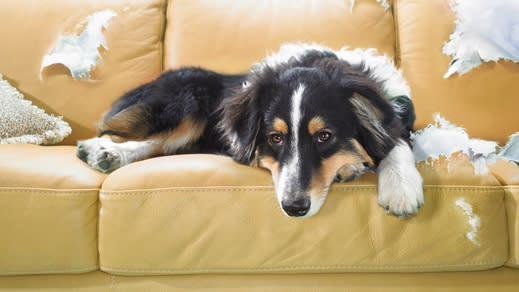
Dogs don’t always behave in the way that you expect. They can bite, bark, respond poorly to commands, chew and constantly up jump on people – a far cry from the happy, waggy, playful little doggie that you always envisioned welcoming into your home.
But common dog behavior problems aren’t always a sign that there is something inherently wrong with your pooch. Likewise, it doesn’t necessarily mean you have failed to do something or that what you have done is wrong.
So here we present 32 common dog behavior problems and solutions to help put your pooch back on track. Half the battle is understanding why your dog is behaving in such a way and fixing problems isn't always difficult.
32 common dog behavior problems and solutions
1. Excessive barking

Some dogs bark at everything and anyone. They may be fearful, frustrated, in pain, over-tired, bored or feeling distressed at being left alone. Try to work out what the trigger could be. Maybe the solution lies in desensitizing dogs, slowly working on one trigger at a time. Or perhaps it’s as simple as introducing the best dog toys to help mentally stimulate your canine.
2. Aggression
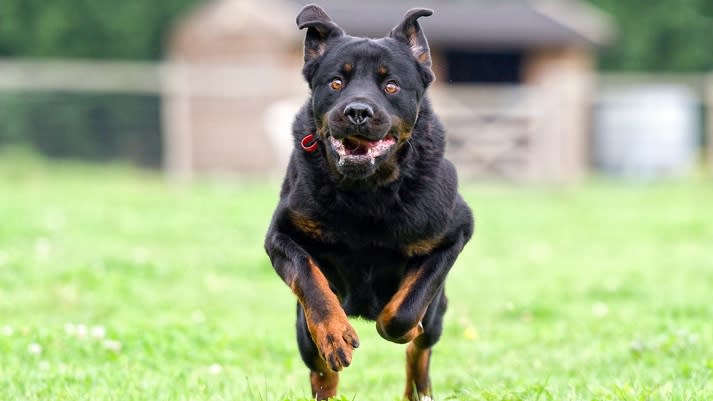
Aggression is a highly undesirable behavior and it can be dangerous to people and animals if left uncontrolled. It is usually caused by fear, frustration, dominance, possessive behavior and pain and illness. If you want to know how to tackle dog aggression rather than seek professional help, reinforce basic obedience training and use distraction tactics, perhaps with the best dog treats.
3. Nipping or play biting when a puppy
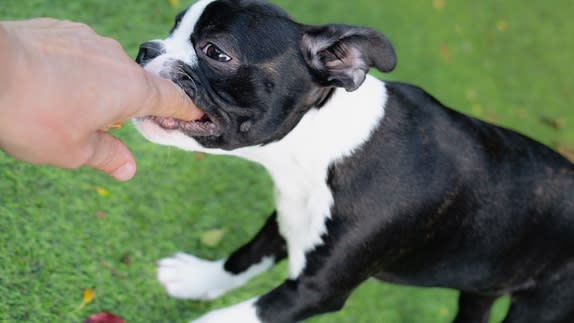
It’s natural for a puppy to nip or play bite. It can be a sign that they’re becoming familiar with the world, testing boundaries or even teething. But if it's tipping into aggressive behavior or the nips and bites are growing in frequency, take action. Try immediately and silently moving away from your dog for a very brief time to show that you don’t like the behavior. Make sure you don’t give the best dog treats at this moment and move your pet’s attention to something else such as the best dog chew toys.
4. Nipping or play biting when an adult
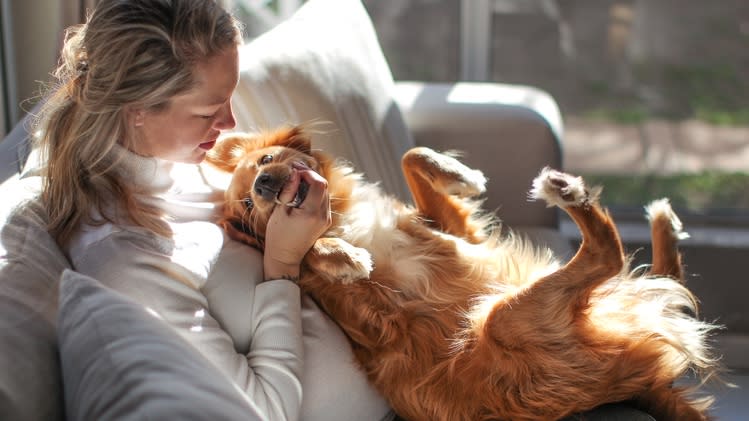
If nipping and play biting is still a problem in adulthood, there is usually an underlying problem. Sometimes the biting or nipping is out of fear or pain. Often it’s because a dog doesn’t understand the boundaries of play or they’ve become startled. The solution? You need to exercise your dog well, work on socializing them and allay their fears by showing them that you and others are not threatened. Teaching impulse control is important. A dog needs to understand (and act upon) commands such as “sit” and “no bite”.
5. Rough play
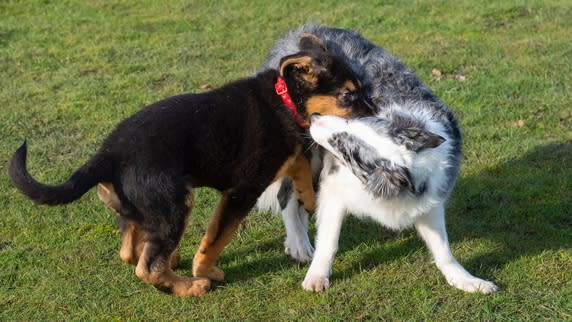
Dogs can play rough with you or with other dogs and it’s important to keep a close eye on them to make sure sessions don’t get out of hand or rough play becomes normalized. Watch for signs that dogs are becoming tense, starting to show their teeth or beginning to bark or growl. Remain calm, call your dog’s name, seek to distract them and end the play time. You may want to send your dog to their bed, put them on a lead or give them one of the longest lasting dog chews but don’t shout.
6. Lead pulling
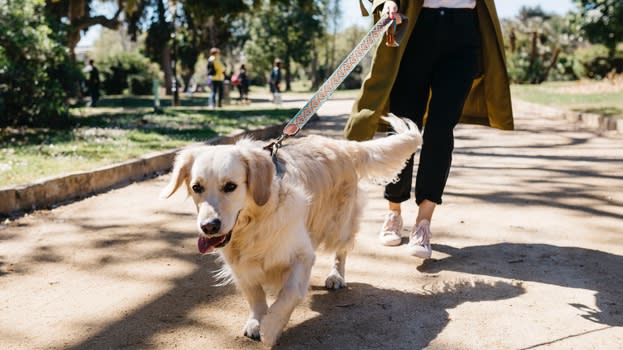
Going for a walk is not supposed to be a battle of wills where you’re constantly having to stop your dog from pulling on the lead. Dogs pull on their leash because they become distracted and excited with the world around them. Knowing how to stop a dog pulling on a leash is, therefore, a lesson in getting them to focus their attention on what you want them to do and getting them to feel comfortable, ensuring their walks are calm. If they get to the end of their leads, stop and wait for your dog to realise that is their limit and, when they return, reward them.
7. Chewing and destructive behavior
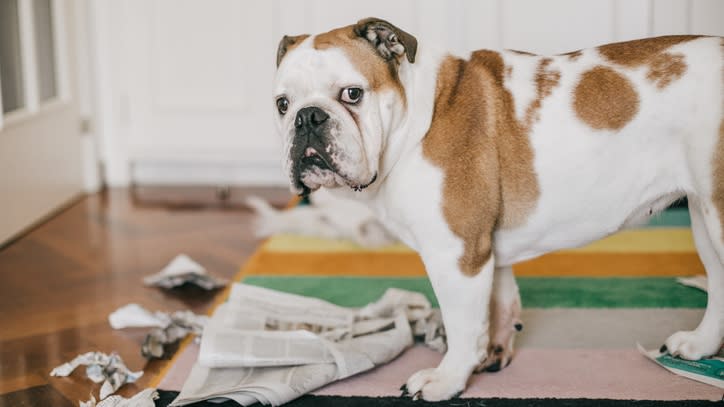
Puppies should ideally grow out of chewing anything and everything by the time they reach adulthood but if they’re still gnawing and being destructive, be proactive. When younger, distract them with the best teething toys for puppies. Remove as many chewable items away from your dog as possible and identify potential causes such as separation anxiety (which we look at in more detail below). Is your dog hungry? Make sure they’re eating enough of the best dog food.
8. Separation anxiety
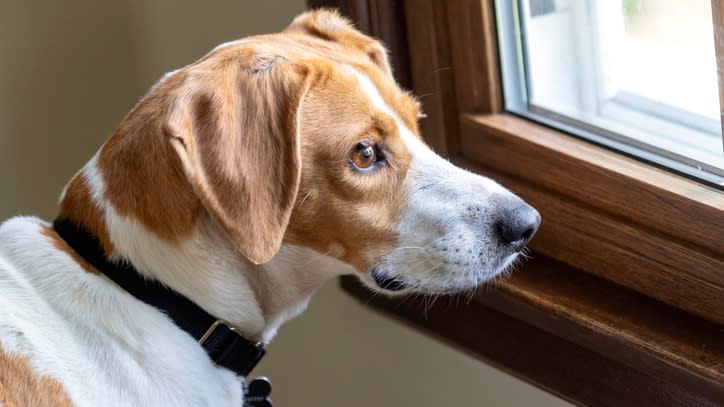
There’s a reason why dogs are humans’ best friend: there is mutual love. So when the bond is broken because you are absent, it can result in destructive behavior. Discovering how to reduce separation anxiety in dogs is crucial. You need to show your dog that you will be back – routines and building up the time you’re away can help with this. Be predictable and ensure your pet has their own comfortable space. Ensure your dog is well exercised and mentally stimulated, too, perhaps with the best dog puzzle toys.
9. Inappropriate elimination
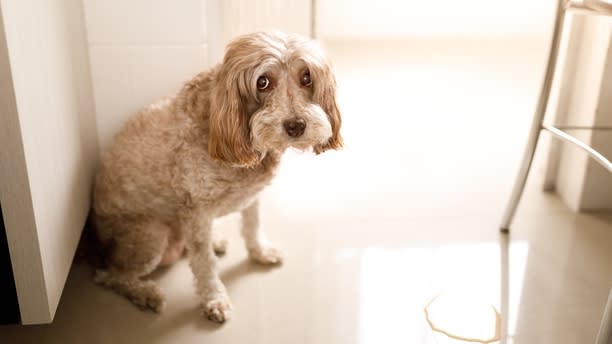
This refers to dogs that are urinating and defecating at the wrong times and in the wrong places. Left unchecked, it can damage parts of your home, cause a stink and rapidly become unhygienic. Work on preventing unwanted poops and figure out how to stop your dog peeing in the house. Start by ensuring they’re getting plenty of opportunity to urinate and defecate outdoors, prevent them from becoming over excited and help relieve fears and anxieties. Be aware that infection or bladder stones can also be to blame, so seek professional help if you feel it’s appropriate.
10. Counter surfing
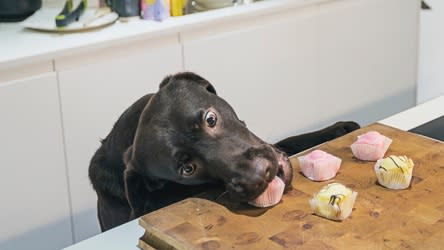
Nobody really wants to see dogs jumping up to grab food from the countertop, no matter how cute it was the first few times. So put a stop to dog counter surfing by placing a bowl of treats on the counter and, when you see that your dog isn’t reacting, reward them with one. If they jump up, say “no”, move the bowl and don’t allow them a treat. Eventually, your dog will realise that there’s nothing to be gained from leaping.
11. Begging
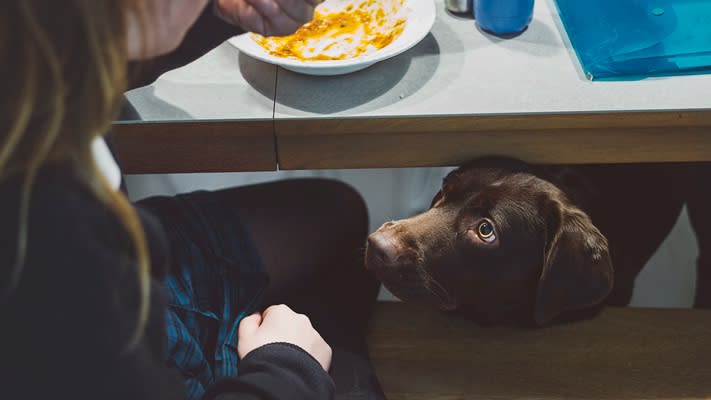
Dogs love food. That’s natural. We love food too. But you don’t want your dog to beg for your food or that of other people. As such, knowing how to stop dogs begging for food is useful and one of the first steps is to make sure nobody in your family feeds a dog from the table. It’s also a good idea to give your dog the best wet dog food while you’re eating by way of distracting them. With sufficient mental stimulation and rewards for those times your dog isn’t begging, you should be on your way to resolving the problem
12. Chasing other dogs
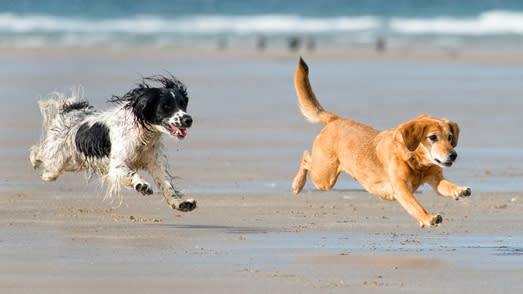
Dogs are interested in other dogs but you don’t want them to give chase. That can result in either your dog or the other dog (or both) being hurt. Early socialization and teaching dogs to respect commands such as “stop” and “come here” is important. When they do as you say, give your dog a tasty reward and lavish them with praise.
13. Chasing other animals
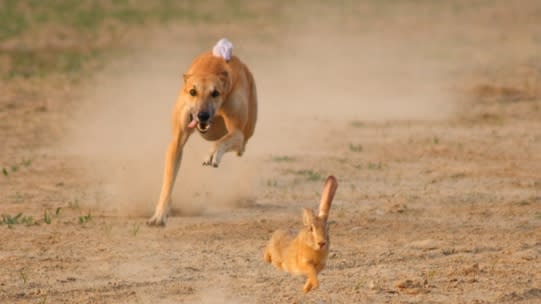
There’s a bit of a theme here. Dogs will also chase other animals and, in some cases, humans. If your dog has a natural high prey drive, then you need to be wary when taking them off-lead in public places or in situations where small animals are present. Again, early socialization is important, as is the teaching of stop commands.
14. Chasing anything that moves
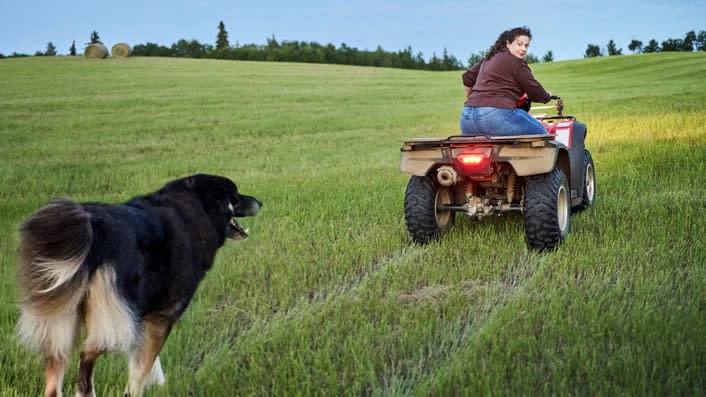
You may find that your dog will seek to run after practically anything – including cars! Seeing your pet running after traffic is going to leave your heart in your mouth so familiarize yourself with 15 helpful ways to get your dog to come back to on off leash walks which includes good recall training, finding the right spaces to walk your dog, being consistent and offering appropriate rewards.
15. Jumping up on people
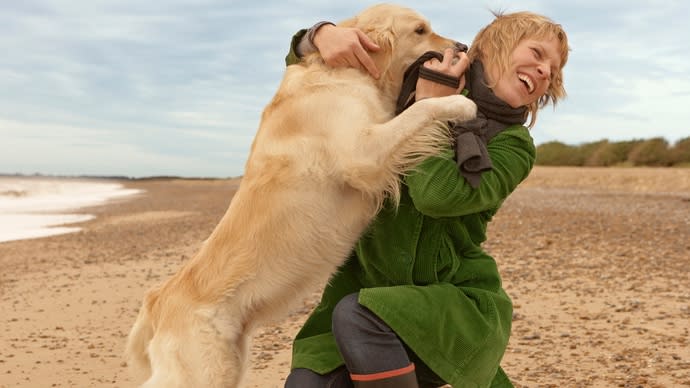
Dogs usually jump up on people because they want attention. And when people give a dog attention at this point, it only encourages them to continue behaving this way. The trick is to ignore your dog when it jumps and ask others to do the same. That means not looking at them, not pushing, not even talking. Eventually, dogs begin to understand that jumping up elicits no response.
16. Mounting
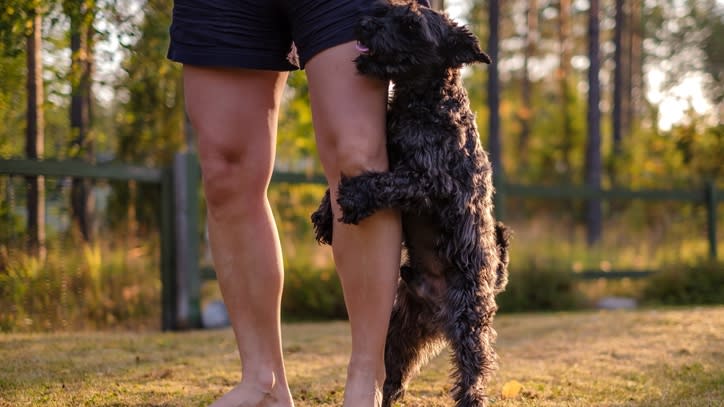
Dogs tend to hump – or mount – because they are bored, stressed, anxious or overstimulated. They may also be displaying sexual behavior because they are not yet spayed or neutered. Redirection and positive reinforcement can help, the idea being that you are distracting your pooch. Leaving them alone immediately after they have mounted can also be effective.
17. Digging
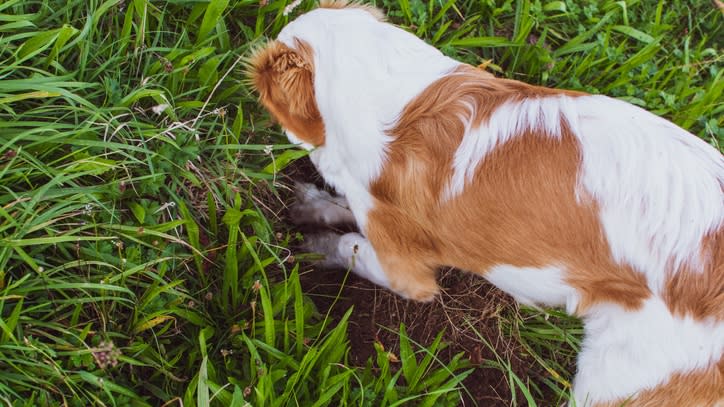
Ever wondered, “why is my dog digging?”. While your canine companion is likely acting on instinct, it’s nevertheless a common problem especially if you have a nice flower bed and your pet is destroying it! It can also be a sign of boredom and anxiety. The solution? Keeping a dog occupied in other ways by keeping them physically and mentally fit and by ensuring they have access to the best durable dog toys.
18. Food guarding

You would never want to chomp down on your dog’s food but your pet doesn’t know that. Get close to their food and they may become aggressive or even threaten to bite. In this situation you need to know how to stop puppy food aggression and that can involve actually giving them more food. You could also try feeding a dog from your hand (once they’ve calmed down, of course) to show that you’re a food giver not a taker.
19. Fear of noises
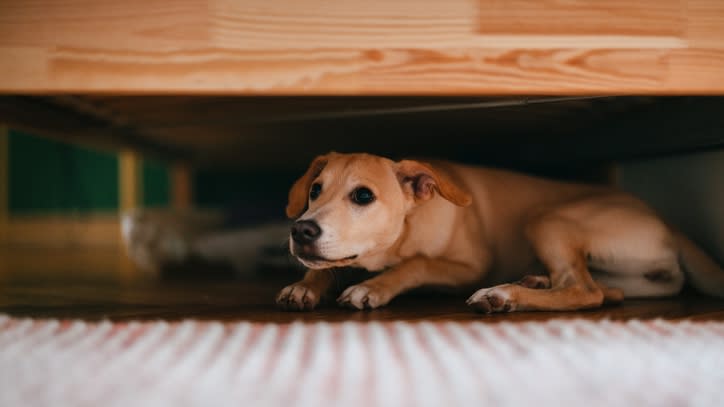
It’s not unusual for anxiety in dogs to emerge when there are loud sounds such as fireworks or thunderstorms. You could try and get a dog used to these specific sounds by finding audio recordings of them online and playing them at a low volume before cranking it up gradually over time. Prevention is often better, though. Don’t take your dog for walks in a storm or when fireworks are being lit and try to mask the noises with other sounds such as rap music which is said to work well.
20. Howling
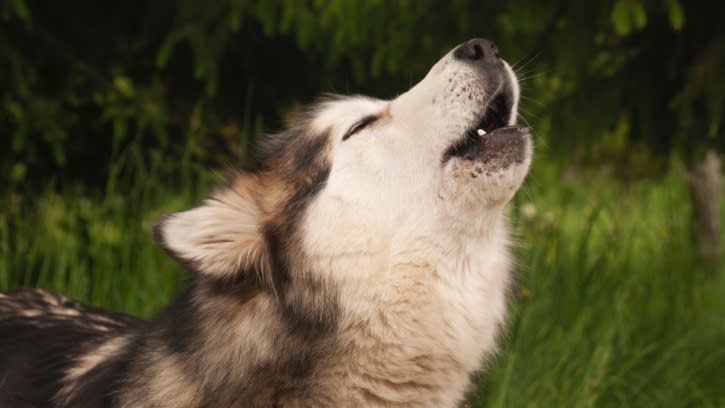
Howling is a form of communication. It grabs your attention and shows that dogs are alert to whatever is around them. Howling can be due to illness or separation anxiety, however, in which case seek professional guidance or find ways to comfort your dog when no-one is going to be around. If you feel howling is a way of seeking attention, ignoring the noise could help.
21. Whining
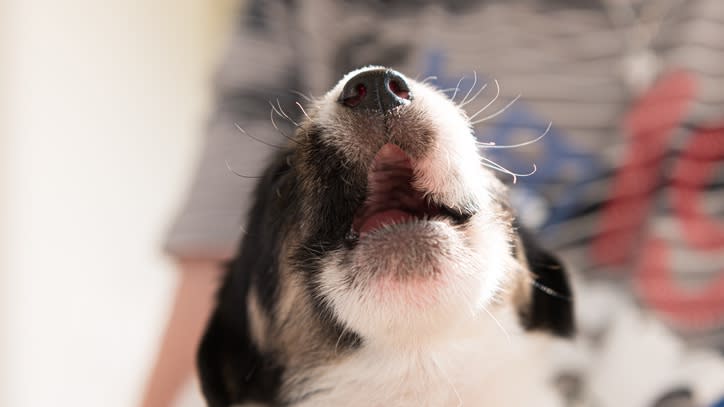
Whining is also a call for attention or a sign of anxiety in dogs. As with howling, it’s you suspect it’s a way of capturing your attention, ignore it and don’t give eye contact. Don’t show your dog that whining gets a response and try and treat your dog once the whining stops. If it’s due to anxiety, get to the bottom of what is causing the condition. A trip to the vet may be in order.
22. Hyperactivity
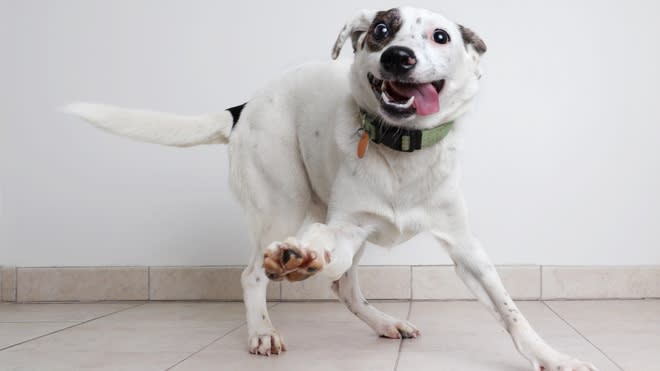
If a dog just can’t keep still and has far too much energy bubbling away inside its body, you may find that they’re simply not being exercised sufficiently. Always check the exercise requirements of your pooch to see how long they need to be walked and played with. If you’re not meeting a dog’s need for mental and physical stimulation, you will always have a boisterous pup on your hands.
23. Stealing items

Okay so your dog isn’t donning a mask, stripy jumper and carrying a sack with “swag” written across it but things do appear to be going missing and appearing in usual places. If this is happening then chances are your dog is trying to play a game with you. It knows that you will try to find the item or give chase if you catch the dog in the act. More attention and more playtime is often the answer.
24. Excessive licking
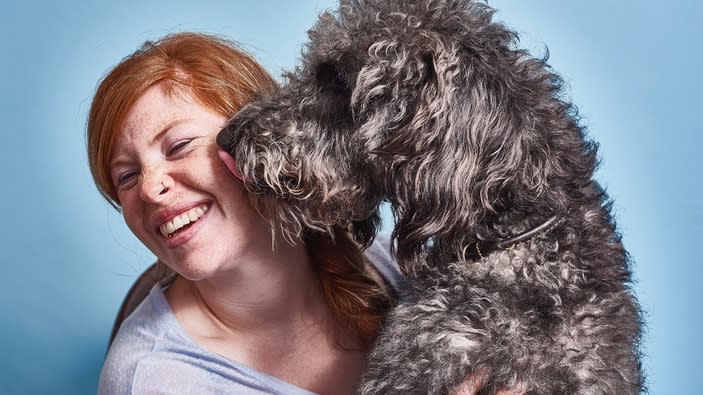
Are you finding excessive licking to be a little too gross? It feels fine every now and then but too much is actually a sign that something is wrong, whether that be an underlying health condition, anxiety, stress, boredom or pain. Self-licking is also a problem because it can damage the skin. If trying to calm your dog or stepping up the time you spend with your pet doesn’t work, it is worth popping to your vet for advice
25. Disobedience

So you issue commands, try and reason with your dog, give out treats and work through every trick in the book but still your dog is refusing to listen to you. It may be time to go back to square one and start obedience training from scratch. If you’re not sure what to do then bring a professional on board. Don’t bribe a dog and don’t punish either.
26. Overprotective of people
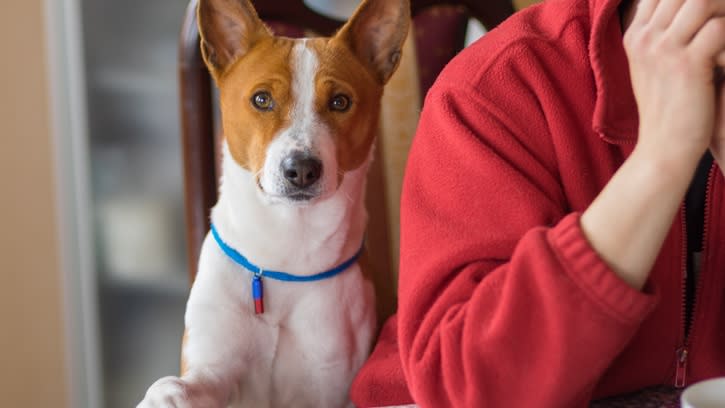
If your dog has become possessive of your or other people and won’t let anyone else come close, that’s a real problem. It’s a sign that they are feeling secure and they are trying to exert control. If you’ve gone past the early socialization stage, try and quietly put distance between you and the dog when it displays such behavior and seek treatment for separation anxiety. A trip to the vet is worthwhile.
27. Overprotective of property
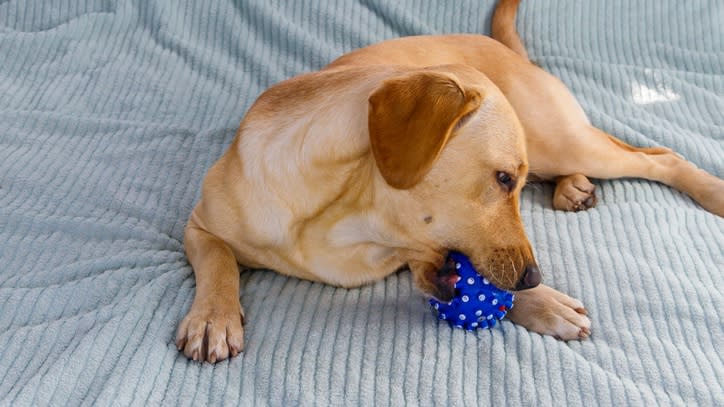
Dogs can also become possessive of items, too. It’s fine if your dog doesn’t lose control or bite when someone approaches but you can encourage your dog to give up their toy by rewarding them with a treat when they drop it. You can also hand them an alternative and try to train dogs to understand that they will be rewarded every time they share a toy with you. Patience and understanding are key.
28. Escaping

Like Harry Houdini, your dog is proving to be something of an escape artist and you’re just not sure how to keep your dog in the yard. Working out why a dog is trying to escape, however, is important: is your pet feeling lonely, detached, sexually frustrated or isolated? In any case, the answer lies in ensuring a dog cannot escape so scour your home and yard for potential escape points and deal with them.
29. Eating feces
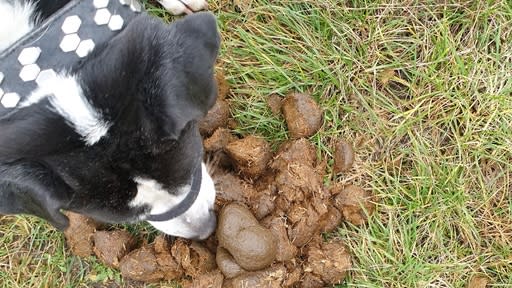
Yes it is gross but why do dogs eat poop? There are many reasons, hunger being one of them and if this is the case then make sure your pup is being well fed. Boredom can also be a cause so keep a dog mentally and physically stimulated, distracting their attention to any poops they may find. If these don’t work, consult a vet for further advice.
30. Excessive self-grooming
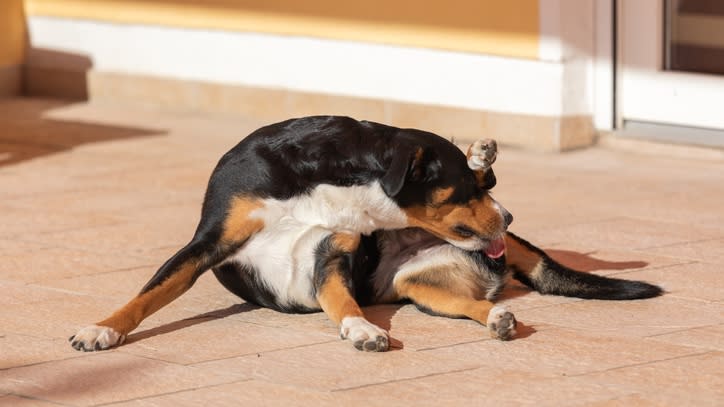
This is a similar problem to excessive licking and it will need to be tackled in case your dog is feeling stressed and anxious. Dogs who excessively lick around the joints could be unwittingly pointing out an underlying issue such as fractures or arthritis so visit a vet to assist if using the best dog toys don’t prove a good enough distraction.
31. Tail chasing
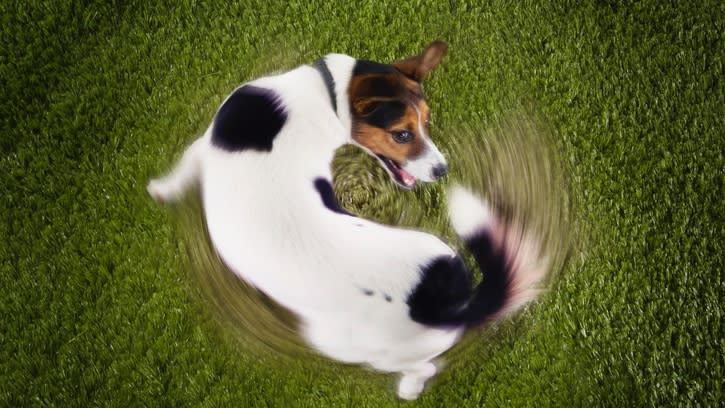
If you're desperate to know why do dogs chase their tails? then you are likely to have a pooch who is doing just that. They may simply be playing or be bored – engage with your dog at these times so the focus is away from the tail. It could, however, indicate an injury or irritation. Seek professional advice if you suspect something is wrong.
32. Showing fear at the vets
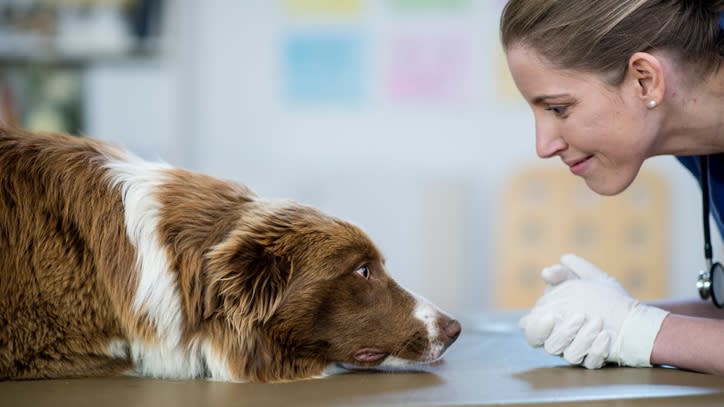
If your dog doesn’t like going to the vet, then you need to work with your vet on building your pooch’s confidence. Try taking your dog to the vet’s waiting room without the need for an examination then introduce some time with a nurse. If you don’t have a lot of time on your hands, you could book appointments during quiet periods. Your vet can advise the best times.